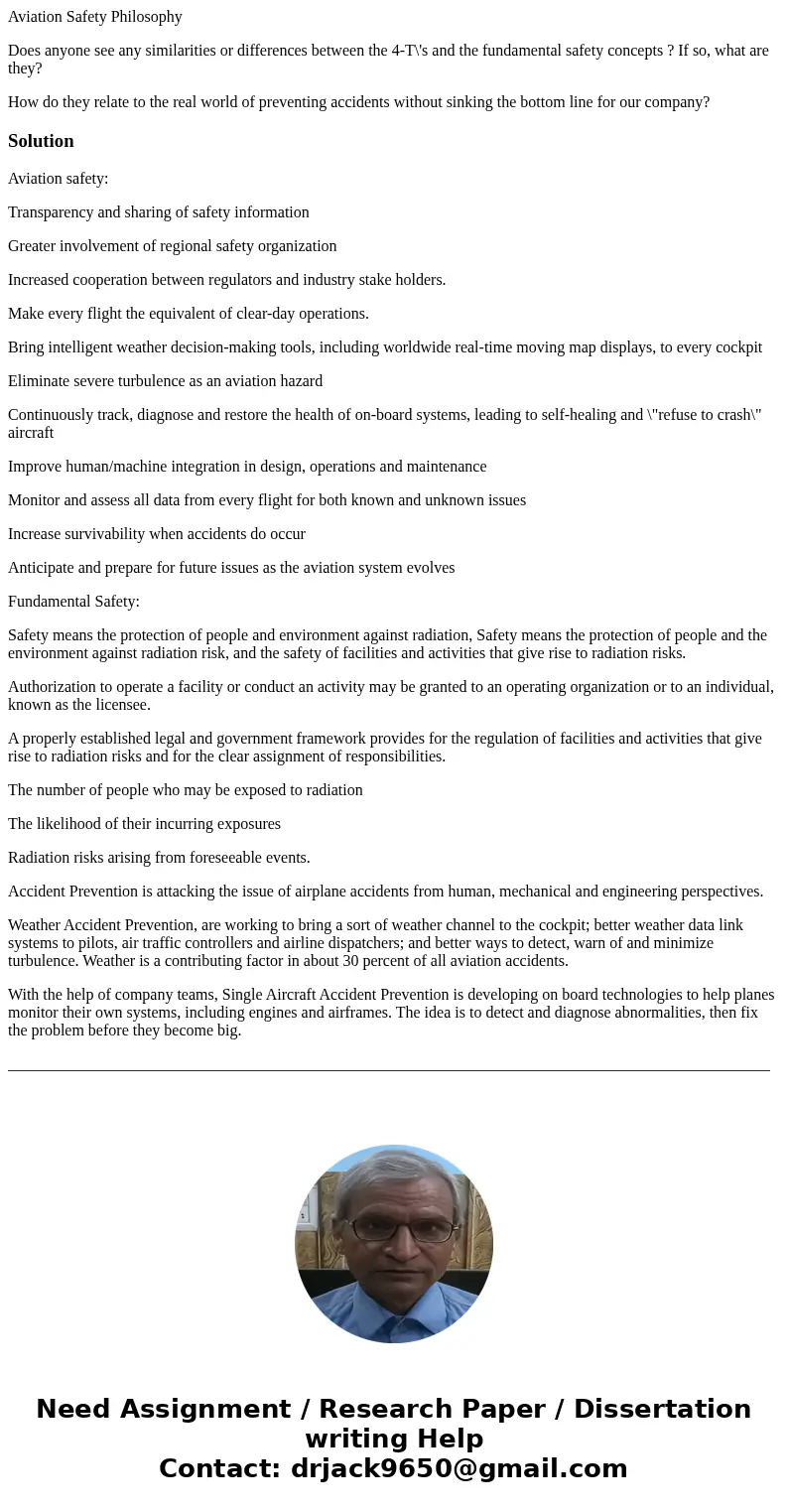Aviation Safety Philosophy Does anyone see any similarities
Aviation Safety Philosophy
Does anyone see any similarities or differences between the 4-T\'s and the fundamental safety concepts ? If so, what are they?
How do they relate to the real world of preventing accidents without sinking the bottom line for our company?
Solution
Aviation safety:
Transparency and sharing of safety information
Greater involvement of regional safety organization
Increased cooperation between regulators and industry stake holders.
Make every flight the equivalent of clear-day operations.
Bring intelligent weather decision-making tools, including worldwide real-time moving map displays, to every cockpit
Eliminate severe turbulence as an aviation hazard
Continuously track, diagnose and restore the health of on-board systems, leading to self-healing and \"refuse to crash\" aircraft
Improve human/machine integration in design, operations and maintenance
Monitor and assess all data from every flight for both known and unknown issues
Increase survivability when accidents do occur
Anticipate and prepare for future issues as the aviation system evolves
Fundamental Safety:
Safety means the protection of people and environment against radiation, Safety means the protection of people and the environment against radiation risk, and the safety of facilities and activities that give rise to radiation risks.
Authorization to operate a facility or conduct an activity may be granted to an operating organization or to an individual, known as the licensee.
A properly established legal and government framework provides for the regulation of facilities and activities that give rise to radiation risks and for the clear assignment of responsibilities.
The number of people who may be exposed to radiation
The likelihood of their incurring exposures
Radiation risks arising from foreseeable events.
Accident Prevention is attacking the issue of airplane accidents from human, mechanical and engineering perspectives.
Weather Accident Prevention, are working to bring a sort of weather channel to the cockpit; better weather data link systems to pilots, air traffic controllers and airline dispatchers; and better ways to detect, warn of and minimize turbulence. Weather is a contributing factor in about 30 percent of all aviation accidents.
With the help of company teams, Single Aircraft Accident Prevention is developing on board technologies to help planes monitor their own systems, including engines and airframes. The idea is to detect and diagnose abnormalities, then fix the problem before they become big.
________________________________________________________________________________________________

 Homework Sourse
Homework Sourse